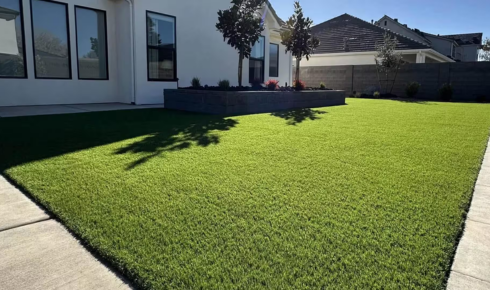The Complete Guide to Artificial Grass for Your Home and Business
Artificial grass has become an increasingly popular landscaping solution for homeowners, businesses, and sports facilities. It offers a lush, green appearance all year round without the constant maintenance that natural grass requires. Whether you want to enhance your backyard, create a pet-friendly play area, or revamp a commercial space, artificial grass can be an excellent investment.
What is Artificial Grass?
Artificial grass, also known as synthetic turf, is made from high-quality synthetic fibers designed to replicate the look and feel of real grass. It is installed on a base layer that ensures durability and drainage, making it suitable for various weather conditions. Modern manufacturing techniques have made it difficult to distinguish between artificial and natural grass at first glance.
Benefits of Artificial Grass
One of the main advantages of artificial grass is its low maintenance. Unlike natural lawns, it doesn’t need mowing, watering, or fertilizing. This makes it a cost-effective and eco-friendly option in the long run. Some key benefits include:
- Water Conservation – Since it requires no watering, artificial grass can help reduce your water bills and contribute to environmental sustainability.
- Durability – High-quality synthetic turf can last for years without fading or wearing out, even in high-traffic areas.
- All-Weather Use – Artificial grass stays green and usable in all seasons, whether it’s sunny, rainy, or snowy.
- Pet and Child Friendly – Many varieties are non-toxic and safe for both pets and children, with easy cleaning and minimal mess.
- Aesthetic Appeal – It maintains a manicured look throughout the year, giving your property a neat and attractive appearance.
Common Uses for Artificial Grass
Artificial grass can be used in many settings, from residential lawns to commercial spaces. Some common applications include:
- Residential Gardens – Homeowners use it to replace natural lawns for easy maintenance.
- Sports Fields – Football, tennis, and hockey fields often feature synthetic turf for consistent performance.
- Rooftop Gardens – Urban spaces benefit from lightweight turf that adds greenery without soil.
- Play Areas – Soft, cushioned artificial grass is perfect for children’s playgrounds.
- Pet Runs – It provides a clean and safe surface for pets to play on.
Installation Process
Installing artificial grass involves several steps to ensure a long-lasting result. First, the existing surface is cleared of weeds and debris. Next, a base layer of crushed rock or sand is added for proper drainage. The artificial turf is then rolled out, trimmed to fit, and secured with nails or adhesive. Finally, the grass fibers are brushed up, and infill material is added for stability and softness. Professional installation can guarantee a flawless finish, but DIY installation is also possible with the right tools and preparation.
Maintenance Tips
While synthetic grass requires far less upkeep than natural grass, occasional maintenance helps it stay fresh and clean:
- Remove leaves and debris regularly using a leaf blower or broom.
- Rinse the surface occasionally to remove dust and spills.
- Brush the fibers to maintain their upright position.
- Address pet waste promptly to prevent odors.
Cost Considerations
The cost of artificial grass depends on factors such as quality, pile height, and installation method. While the initial investment can be higher than natural grass, the long-term savings on water, fertilizers, and maintenance often make it more affordable over time. Additionally, it can boost property value by enhancing curb appeal.
Environmental Impact
Artificial grass helps conserve water and eliminates the need for harmful pesticides and fertilizers. However, it is made from synthetic materials, so proper disposal or recycling at the end of its lifespan is essential. Many manufacturers now offer eco-friendly turf options made from recycled materials.
Conclusion
Artificial grass offers a versatile, attractive, and low-maintenance solution for modern landscaping needs. From residential gardens to commercial areas, its durability, year-round beauty, and eco-friendly benefits make it a smart choice. By choosing high-quality materials and proper installation, you can enjoy a lush green space without the hassle of traditional lawn care.

